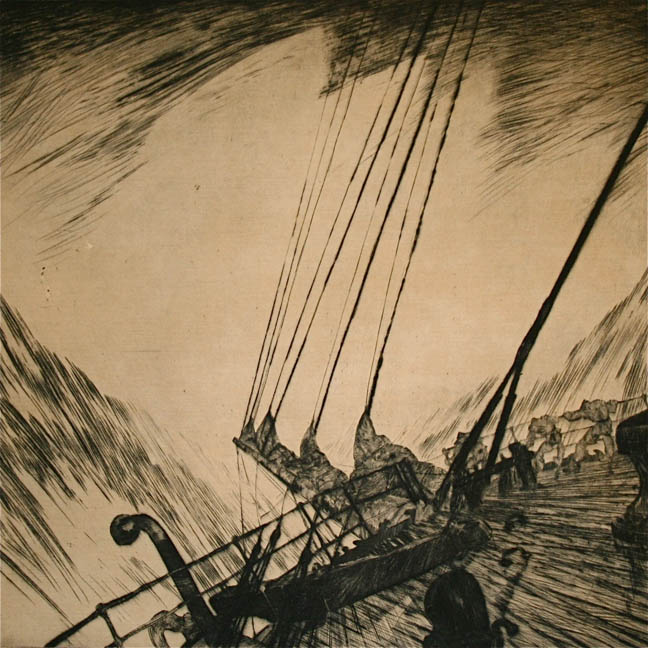

Title: Ocean Boat Storm Limited Edition Ship Deck Etching Print
Shipping: $29.00
Artist: N/A
Period: Unassigned
History: N/A
Origin: North America > United States
Condition: Museum Quality
Item Date: 1900 to 1930
Item ID: 3425
This is a limited edition print west of Magellan, etching of an Ocean storm. The boat is fighting for its life out on the open sea. The art work derives from the inherent high risk of injury or death the crews face due to the hazardous work environment and nature of the work itself. The art emphasizes the very real danger to the crew on the decks of these boats; situations are just as dangerous today working on the ocean. This is a great boat print, out on the open Sea, fighting wave swell storms.
Link: http://en.wikipedia.org/wiki/Wind_wave
Wind waves are called swell. Or, more generally, a swell consists of wind generated waves that are not — or hardly — affected by the local wind at the same moment. They have been generated elsewhere, or some time ago. Wind waves in the ocean are called ocean surface waves.
Wave or storm system. Given the variability of wave height, the largest individual waves are likely to be about twice the reported significant wave height for a particular day or storm.
Rogue waves (also known as freak waves, monster waves, killer waves, extreme waves, and abnormal waves) are relatively large and spontaneous ocean surface waves that are a threat even to large ships and ocean liners. In oceanography, they are more precisely defined as waves whose height is more than twice the significant wave height (SWH), which is itself defined as the mean of the largest third of waves in a wave record. Therefore rogue waves are not necessarily the biggest waves found at sea; they are, rather, surprisingly large waves for a given sea state. "Rogue waves are not tsunamis, which are set in motion by earthquakes [and] travel at high speed, building up as they approach the shore. Rogue waves seem to occur in deep water or where a number of physical factors such as strong winds and fast currents converge. This may have a focusing effect, which can cause a number of waves to join together.
For centuries maritime folklore told of the existence of vastly more massive waves — veritable monsters up to 30 meters (98 ft) in height (approximately the height of a 10-story building) — that could appear without warning in mid-ocean, against the prevailing current and wave direction, and often in perfectly clear weather. Such waves were said to consist of an almost vertical wall of water preceded by a trough so deep that it was referred to as a "hole in the sea"; a ship encountering a wave of such magnitude would be unlikely to survive the tremendous pressures of up to 980 kPa (142 psi) exerted by the weight of the breaking water, and would almost certainly be sunk in a matter of minutes. Many years of research have confirmed that waves of up to 35 meters (115 ft) in height are much more common than mathematical probability theory would predict